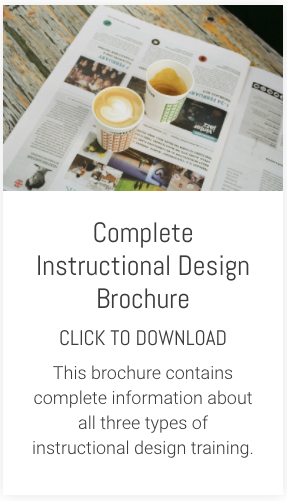This isn’t the first time that I’ve made reference to what I call Storyline’s ‘secret weapon’. A Storyline ‘advanced’ feature that gets buried away in the background because it’s not very ‘sexy’ nor particularly easy to market. Yet learning to use it can transform the e-learning courses you build.
In case you are wondering? I’m talking about Storyline variables.
However, the purpose of today’s post is not to write extensively about Storyline variables. (If you are interested, I have written about Storyline variables here).
What interests me today is the fact that lots of software/technologies often have some kind of ‘secret weapon’. In other words, a hidden something that a majority of users don’t know about, which is incredibly powerful or useful but somehow never gets the attention it deserves.
Typically, the hidden something is conceptually abstract or technically a bit complex; so, it takes some care and effort to explain it clearly and easily. And it often takes some care and effort by software users to really reap the benefits of it.
Which usually leaves it friendless. Tucked away in an obscure corner of the interface by UX and UI designers. Shunned by the marketers (just not ‘sexy’ enough). Glossed over by the technical writers and technology evangelists.
And you can understand why. In the push to get a piece of software or a technology widely adopted as quickly as possible, the most popular and easiest to use features are, inevitably, going to get the most attention.
And in lots of ways, that is a good, user-centred approach. After all, if the software or technology in question isn’t obviously solving some kind of problem or making it easier or possible to do something that was previously difficult or impossible to do, what’s the point?
But this also misses an important point. Hiding that more difficult-to-explain feature probably results in inferior user output. Returning to the example I opened with, this is absolutely true in the case of Storyline variables. It’s not that you need to use them in every single course that you create. But never using them at all will absolutely reduce the creative potential and the effectiveness of your instructional design.
So, why am I obsessing about all this, at the moment? Well, you may already know that I’m working on a new software tool for L&D called PerformaGo. And the AI technology that this software is designed to help L&D folk like yourself unleash, definitely has its own buried treasures. (Something I’ve been writing about here). In essence, it’s about how you provide specific knowledge to your custom GPT so that you get reliable, accurate output when it’s being used by a learner.
Which means that this particular ‘buried treasure’ is going to play a very significant role in making the PerformaGo tool a success. The question of how that specific knowledge is packaged up and accessed can’t be glossed over, in the hope that some users will find it and work out how to use it. It needs to be front and centre.
And that will be a challenge. Because in some respects this element is a bit abstract. It will definitely require some careful thought around how it is presented and explained to users within the software interface itself and in any related ‘help’ content or software onboarding.
But once you consider the benefits for L&D folk of getting this ‘buried treasure’ front and centre, the challenge of achieving that goal seems small by comparison.
If any of this interests you, or you like the idea of becoming an early adopter or pilot user of PerformaGo or you would just like to find out some more about the tool, why not register your interest.
And you can follow a more ‘behind-the-scenes’ take on the journey to build the PerformaGo software tool in my online diary.











